There are three genes that affect coat type, giving seven different coat combinations. These seven combinations include: short hair, long hair, curly hair, wiry hair, curly wire hair, long hair with furnishings and curly hair with furnishings. The three genes responsible for coat type are the RSPO2 gene (furnishings), FGF5 gene (long hair) and the KRT71 gene (curly gene). Both the furnishings gene and the curly gene are dominant and only require one copy to give you a curly coat or a coat with furnishings. But, the long hair gene is a recessive gene, so you need both copies in order to get long hair. For the purposes of giving a basic understanding, we will use the letter F for the furnishings locus, the letter L for the long hair locus and the letter C for the curly hair locus. If the letter is noted as a capital it is Dominant and if it is a lowercase letter it is recessive.
FF or Ff – the dog will have furnishings
ff – no furnishings
LL or Ll – short hair
ll – long hair
CC or Cc – curly hair
cc – straight hair
_ – means it can have either the dominant or recessive form
Since both Golden Retrievers and Poodles carry for long hair, we do not need to worry about the long hair gene in Goldendoodles, as all Goldendoodles will be ll = long haired like the Poodle and Golden Retriever. Therefore we only have four coat types that are relevant to Goldendoodles.
So we will look at the Furnishings and Curly Haired genes. Here are the looks you will get when combining these genes.
F_C_ll – This is a dog with at least one furnishings gene and one curl gene. These dogs will have a wavy to curly coat, with facial hair. Picture 1, 2 and 3 are an F1b and F1’s courtesy of Kent Family Farms.
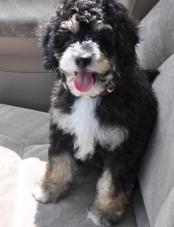
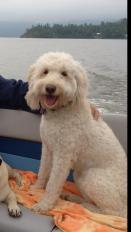
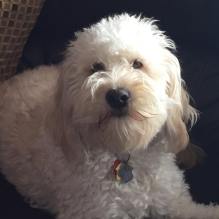
F_ccll – This is a dog with at least one furnishings gene, but no curl genes. These dogs will have long, straighter hair, with facial hair. They will look similar to the Bearded Collie. Picture 1 and 2 is an F2 courtesy of Barefoot Acres Goldendoodles.
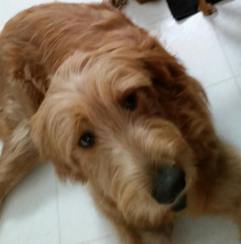
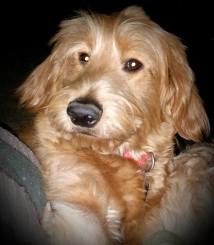
ffC_ll – This is a dog with no furnishings genes, and at least one curl gene. These dogs will have no facial hair, but will have wavy to curly coats. Picture is an F1b courtesy of Magic Valley Goldendoodles (The Poodle stud carries no furnishings)
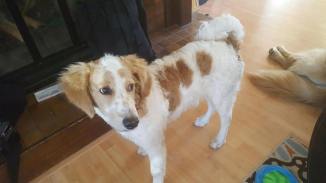
ffccll – This is a dog with no furnishings genes and no curl genes. These dogs will have no facial hair and straight coats. They will look like a Golden Retriever. Picture 1 an F2b courtesy of Kaosfarm Goldendoodles. Picture 2 is an F2b courtesy of Silver Creek Goldendoodles.
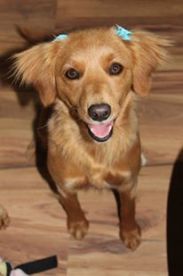
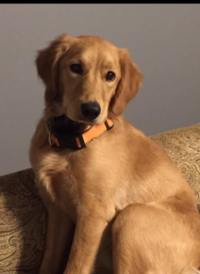
This is a great example of what to expect from a litter where both parents carry for no furnishings. The dog in the middle is the F1 mother with her 4 F2 puppies. As you can see the second dog is a ffccll dog. On average you will find 1 in 4 puppies will get this look from two parents that carry no furnishings. Picture courtesy of Gig Em Goldendoodles.
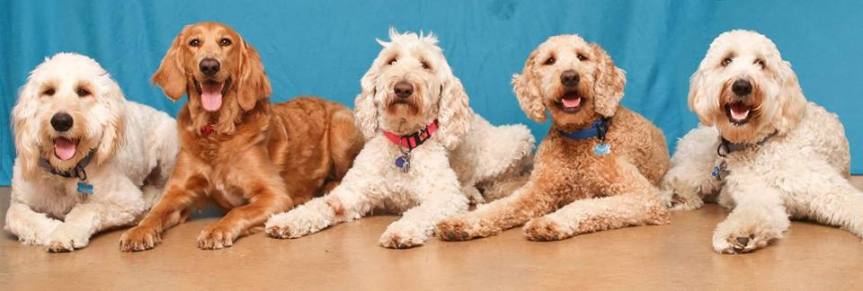
With more research we have discovered that any generation can get any of these coats as there are rare occasions where Poodles carry for no curl and no furnishings.
Here are the genetic chances of what coat you will get with different crosses between dogs with proper coats (F_C_ll).
1. F1 FfCcll crossed with a Poodle FFCCll
100% F_C_ll – Dogs with furnishings and wavy/curly coats
2. F1 FfCcll crossed with an F1 FfCcll
56.25% F_C_ll – Dogs with furnishings and wavy/curly coats
18.75% F_ccll – Dogs with furnishings and no curl
18.75% ffC_ll – Dogs with no furnishings and wavy/curly coats
6.25% ffccllu – Dogs with no furnishings and no curl
3. F1 FfCcll crossed with F1b FfCCll
75% F_C_ll – Dogs with furnishings and wavy/curly coats
25% ffC_ll – Dogs with no furnishings and wavy/curly coats

Great information. Thank you for writing it. Where can you have this testing done?
LikeLiked by 1 person
I personally use Paw Print Genetics, but you can use any genetics laboratory. DDC, Vetgen, Animal Genetics, etc.
LikeLike
Do the ffccll shed like a Golden Retriever?
LikeLike
Yes, they will shed very similar to a Golden Retriever.
LikeLike